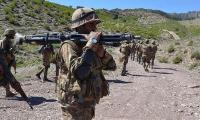With one foot on a banana peel, we are standing at an abyss. PM Shehbaz Sharif and the PML-N face mortal political and economic challenges, and the government has shown little resolve to confront them head-on. Domestic petroleum prices are up more than 40 per cent within the last few days, and energy prices have quickly followed suit.
It is morbidly satisfying that Shehbaz Sharif and the PML-N – of motorway, flyover, and underpass fame – should face rising fuel prices in their ultimate battle for political survival. For decades, our cities have facilitated private car owners at the expense of pedestrians, cyclists, and transit users. The Shehbaz Sharif model of urban development, albeit with different speeds of execution, pervades other political parties and leaders as well; large-scale gray infrastructure like signal free corridors, flyovers, underpasses, and ring roads with obscene levels of service have become the norm in cities around the country. Cities, from Islamabad to Turbat, have become sprawling sites of speculatively held vacant plots in shady housing schemes.
This is our real tragedy. Our current economic crisis is our own Frankenstein’s monster staring right back at us. Consider these examples: Capital Smart City Islamabad is approximately 40 kilometres from Blue Area. DHA City Karachi is over 60kms from Frere Hall. These and other projects exclusively target car owners: only the most influential five per cent of our urban population.
So what to do when the most influential people’s financial and residential interests move 50kms from the city’s economic hubs? Build expressways, signal-free corridors, ring roads, Lyari Expressways, and Leh Expressways to coddle them. These projects help the elite bypass the city’s congestion, often by taking a longer route. Sometimes flyovers and underpasses help address particular points of congestion in the city’s road network. As these projects materialize, the richest few begin to travel more and more to reach their workplaces, meet friends, or for other everyday tasks. Because there’s no public transit – and whatever transit exists is class incompatible – people drive, often in their sparkling new SUVs.
The same logic has unfortunately extended to inter-city travel. We have prioritized motorways and highways over railways. Our railways network has shrunk from over 8500kms of tracks in 1950s to around 7,800kms today. This has been accompanied by a drastic drop in the railways’ share of traffic: while the service carried over 86 per cent of all freight traffic in the 1950s, its current share stands at a meager 4-6 per cent. Similarly, Pakistan Railways has gone from the single largest carrier of passenger traffic in the 1970s to carrying less than 10 per cent of all passengers today.
This drastic decline is not coincidental. According to one estimate, the state spent three times as much on intercity road infrastructure than it did on railways. The uniformed state’s patronage of entities has combined with private car owners’ interests to completely overpower socioeconomic efficiencies associated with rail travel.
All these developments are brazen examples of elite capture. Only around 10 per cent of all urban households own cars, and yet all of our cities have seen massive infrastructural investments that favour private car travel. The railways were always the mode of choice for poorer people, and yet they were left to rot while motorways and highways were built or upgraded. These investments have helped shift the railways to an almost exclusively second/economy class service for the bulk of our population that does not own cars.
The few developments in transit have not quite helped. The second feather in Shehbaz Sharif’s cap – metrobuses in Lahore and Islamabad/Rawalpindi – helped introduce mainstream public transit to the country, but how? Money was needlessly spent on grade separation and similar infrastructure that only served one purpose: maintaining or increasing levels of service for private car traffic. When it came to them, the PTI’s decision-makers in Peshawar repeated the same mistake. They ignored alternative plans that required only a fraction of the resources and instead approved a massive, grade-separated, infrastructure-heavy BRT project that preserved private car level of service at all costs. This cemented public transit’s incompatibility with middle- and upper-class sensitivities.
With rising fuel prices and a crashing rupee-dollar parity, our follies have finally come full circle. PM Shehbaz Sharif’s political survival is threatened by the very monster he nurtured for decades, and on which he built his legacy.
It may be late, but this is also the opportunity of a generation. The way forward is clear for those who wish to see.
The writer is a PhD candidate at the University of Illinois at Urbana-Champaign.
He tweets @faizaanq and can be reached at:faizaanq@gmail.com
Economic nationalism remains potent political narrative, influencing both Republican and Democratic platforms
Yes, blockchain, decentralised and distributed ledger technology, is foundational backbone of cryptocurrencies
Blue carbon covers merely 2.0 per cent of ocean surface but absorbs 50 per cent of carbon dioxide
During WWII, Japan’s economy and national morale were plummeted by its doomed alliance with Germany
More than 40 persons, including women and children, were killed in Parachinar
After November 30, it will be impossible for ordinary internet users to access all banned websites, including X







